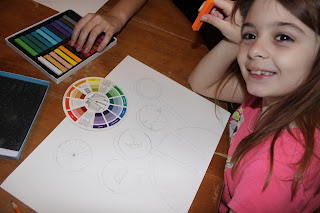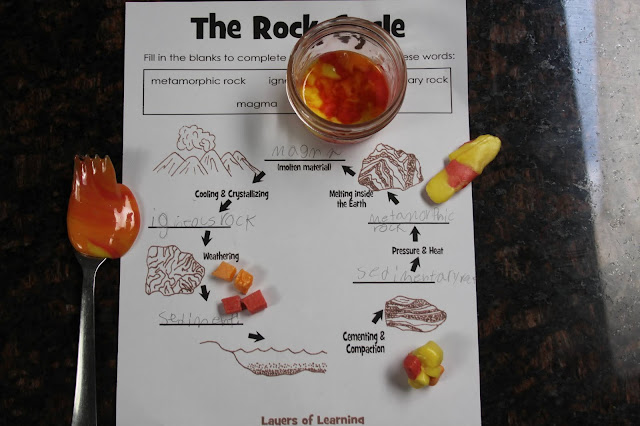Hey there!
We have been learning all about the rock cycle here at home - who knew rocks were constantly being formed and broken down and reformed... its really quite interesting! Here is a really simple "experiment" my girls and I did in the kitchen to help us visually remember each of the different types of rocks...
Its easy, its tasty and best of all it will cost you only two dollars! Yup, head on over to Dollarama and grab yourselves a bag of Starburst candy and you're ROCKING! (hahaha)
Okie-Dokie.. first you want to eat a few starburst. Just get that out of the way.
Next I used a sharp knife to cut a handful of starburst into quarters. I then gave each of my little scientists a handful of these candy "sediments".
The first thing we did was use pressure from our hands to squeeze these 'rock sediments' into a mass... this formed our sedimentary rock. You can still see bits of the original candy pieces, they've just become glued together to form a rock.
Next we made a fist around this sedimentary rock to transfer our body heat to the candy to make them soften. When they were a wee bit squishy, we flattened them against the counter. Krista needed a little bit of my muscle power to get hers to squish. When the candy was smooth and the different colours less easily distinguished, we had ourselves Metamorphic rocks!
The final part of our experiment required my help with the use of the stove. We set two small mason jars in a hot water bath and added our metamorphic rocks to the jars. It took about half an hour for the candy rocks to melt and what we had was liquid-hot Magma!

We carefully took the Magma out of the jars and allowed it to cool on the counter. The cooled magma was our Igneous rock!
Super fun and tasty way to study the rock cycle.. if I were to do it again, the only change I would make would be to wait until AFTER lunch to eat.. I mean make starburst rocks! :)
Jeanette





























